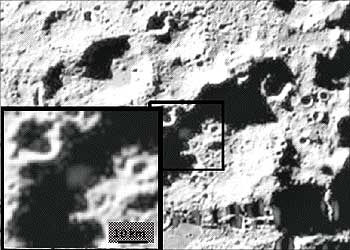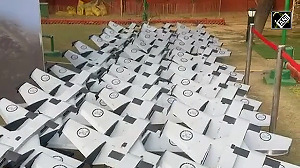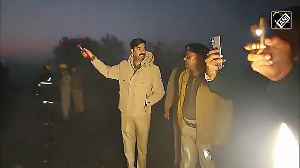 Two months after India's maiden Chandrayaan-I mission discovered traces of water on moon, the National Aeronautics and Space Agency on Saturday said it has found 'significant amounts' of water ice on its surface, a finding that could trigger a hunt for life in outer space and boost hopes for a permanent lunar base.
Two months after India's maiden Chandrayaan-I mission discovered traces of water on moon, the National Aeronautics and Space Agency on Saturday said it has found 'significant amounts' of water ice on its surface, a finding that could trigger a hunt for life in outer space and boost hopes for a permanent lunar base.
"Indeed, yes, we found water. And we didn't find just a little bit, we found a significant amount," Anthony Colaprete, LCROSS project scientist and principal investigator at NASA's Ames Research Centre at Moffett Field, California, said.
NASA's Lunar Crater Observation and Sensing Satellite (LCROSS) probe 'bombarded' the lunar south pole at a crater called Cabeus on October nine.
"In the 20 to 30 metre crater we found may be about a dozen, at least, two-gallon buckets of water. This is an initial result," Colaprete said.
The $79 million spacecraft, preceded by its Centaur rocket stage, hit the lunar surface in an effort to create a debris plume that could be analysed by scientists for signs of water ice.
"The argument that the moon is a dry, desolate place no longer holds water. Secrets the moon has been holding, for perhaps billions of years, are now being revealed to the delight of scientists and space enthusiasts alike," the space agency said in a statement.
Scientists are mulling over the idea of establishing a lunar base that would help in interplanetary missions and space exploration.
"Preliminary data from the LCROSS, indicates that the mission successfully uncovered water during the Oct 9, 2009 impacts into the permanently shadowed region of Cabeus cater near the moon's south pole," it said.
The impact created by the LCROSS Centaur upper stage rocket created a two-part plume of material from the bottom of the crater. The first part was a high angle plume of vapour and fine dust and the second a lower angle ejecta curtain of heavier material.
"This material has not seen sunlight in billions of years," the NASA said.
"We're unlocking the mysteries of our nearest neighbour and by extension the solar system. It turns out the moon harbours many secrets, and LCROSS has added a new layer to our understanding," said Michael Wargo, chief lunar scientist at NASA Headquarters in Washington.
ISRO scientists had in September announced that Chandrayaan-I detected evidence of water across the lunar surface.
Moon Mineralogy Mapper, a NASA instrument onboard Chandrayaan-I, detected wavelengths of reflected light that indicated a chemical bond between hydrogen and oxygen in materials on the thin layer of upper soil.
Image: The visible camera image showing the ejecta plume at about 20 seconds after impact.
Photograph: NASA





